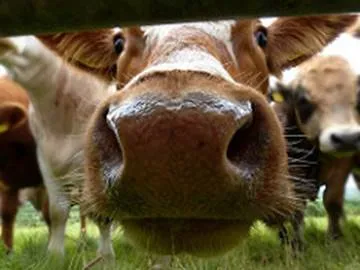This paper presents the results of a modelling exercise that aimed to identify low emissions pathways for a growing global livestock sector. This article uses 6 case studies, modelled in the Global Livestock Environmental Assessment Model developed by FAO, to illustrate the climate change mitigation potential of livestock achievable through changes in feeding, breeding and husbandry as well as grazing management to increase soil carbon sequestration.

The mitigation potential varies from 14 to 41% depending on species, system and region. The authors chose 6 regions based on their overall contribution to GHG emissions and their potential for emissions reduction. The 6 regions cover a wide range of agro-ecological environments and 5 are focused on ruminant systems due to their large contribution to emissions.
- Mixed dairy cattle production in South Asia: this area is responsible for 12% of global milk production, and accounts for 23% of global GHG emissions from dairy mixed systems (60% of which is enteric methane). The main reasons for the large emissions are poor feed quality, a large breeding overhead and high mortality rates.
- Commercial pig production in East and Southeast Asia: this area accounts for 50% of global pork production,and has experienced a 4 fold increase in the past 3 decades. Most of the pigs are reared in intermediate and industrial systems; in intermediate systems high emissions are due to lower animal and herd performance (late first sowing and weaning ages). The main sources of emissions are feed production, land use change and methane emissions from manure.
- Specialised beef production in South America: this produces 17% of global beef from both beef and dairy herds; this area contributes to 54% of emissions from global specialised beef production and 15% of emissions from the entire global livestock sector. 30% of emissions are from enteric methane, but feed production is also an important contributor. The main reasons for the high level of emissions intensity are: land use change, manure deposition on grasslands, and a large breeding overhead.
- Small ruminant production in West Africa: small ruminants produce half of total ruminant meat and 1/3 of total milk in this region. High emissions intensities can be explained by low herd productivity (due to poor animal health and nutrition).
- Mixed dairy production in OECD countries: OECD countries account for 20% of global dairy cows but account for 73% of global milk production. Mixed systems account for 84% of milk production in these countries. While the average emissions intensity of this region is lower than the world average, they still account for 28% of total emissions from global milk production and 6% of the total emissions from global livestock. The main sources of emissions are enteric methane, manure management and feed production, farm and post-farm activities.
- Mixed dairy production in East Africa: this area is home to 10% of world dairy cows but produces only 2% of global milk; the emissions intensity here is 4 times higher than global average for mixed dairy systems, with enteric methane the principal source. This is due to poor feed quality, poor animal performance and a large breeding overhead.
Mitigation options were selected according to their mitigation potential and applicability to the regions and systems in question and were as follows:
- Improving feed quality
- Preventative health measures such as vaccination, stress reduction and low input breeding strategies.
- Better reproductive management
- Feed supplements to reduce enteric methane production
- Anaerobic digesters to treat manure
- Grazing management to contribute to carbon sequestration
- Adoption of energy efficient technologies and using low carbon energy

This map shows regions selected and the potential emissions reduction achievable via the mitigation strategies listed below the region system name.
Abstract
Livestock can contribute to climate change mitigation by reducing their greenhouse gas emissions and by increasing soil carbon sequestration. Packages of mitigation techniques can bring large environmental benefits as illustrated in six case studies modeled in the Global Livestock Environmental Assessment Model developed by FAO. With feasible technical interventions in livestock production systems, the mitigation potential of each of the selected species, systems and regions ranges from 14 to 41 %. While comparably high mitigation potentials were estimated for ruminant and pig production systems in Asia, Latin America and Africa, large emission reductions can also be attained in dairy systems with already high levels of productivity, in OECD countries. Mitigation interventions can lead to a concomitant reduction in emissions and increase in production, contributing to food security. This is particularly the case for improved feeding practices and better health and herd management practices. Livestock systems also have a significant potential for sequestrating carbon in pasturelands and rangelands through improved management, as illustrated in two of the six case studies in this paper.
Reference:
Mottet, A., Henderson, B., Opio, C., Falcucci, A., Tempio, G., Silvestri, S., Chesterman, S. and Gerber, P.J., Climate change mitigation and productivity gains in livestock supply chains: insights from regional case studies. Regional Environmental Change, pp.1-13.
Read the full article here (pay wall).




Comments (0)